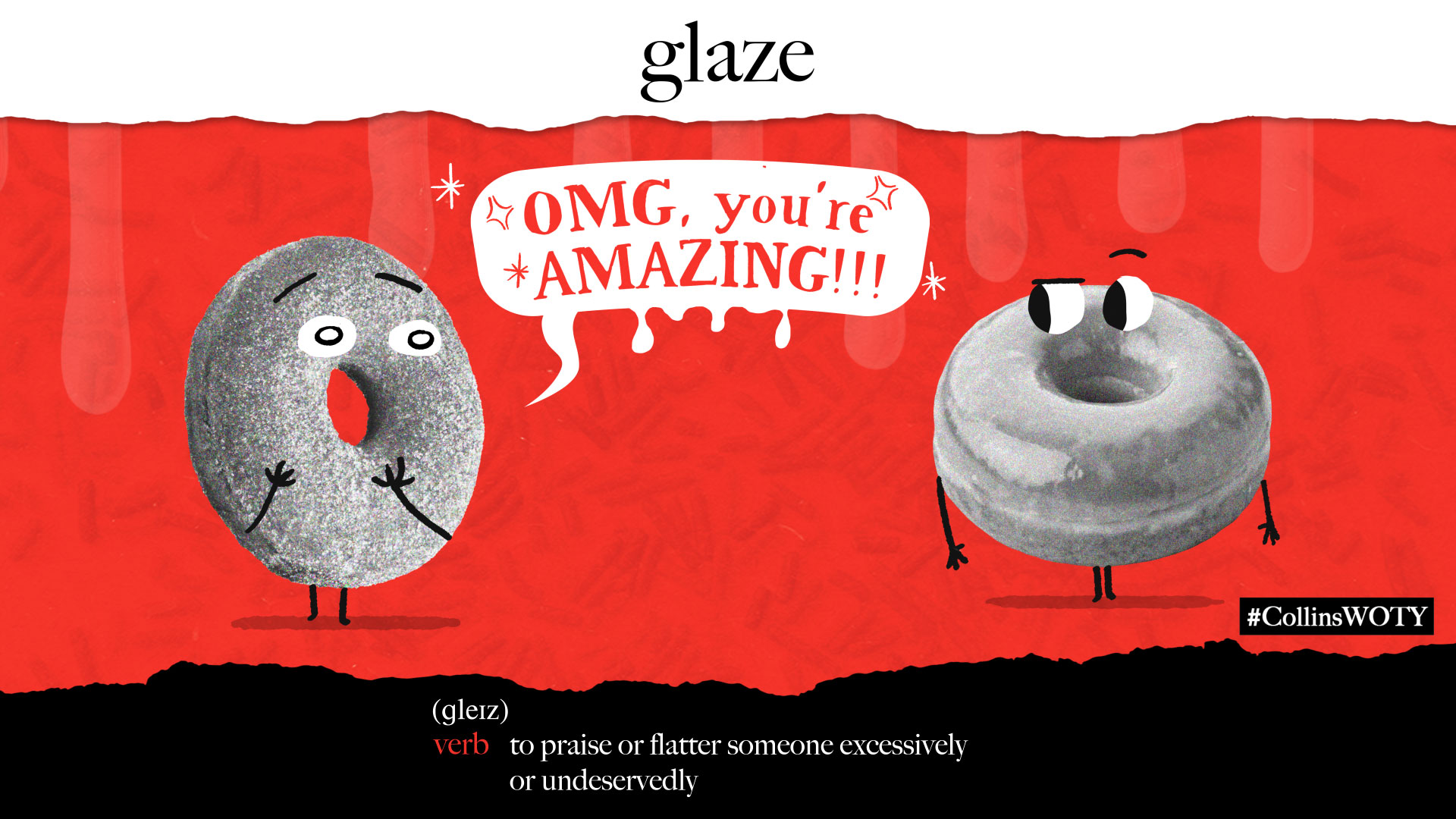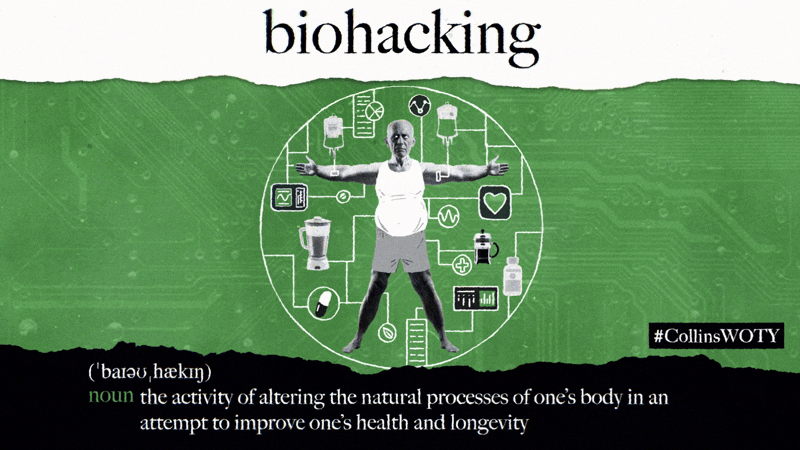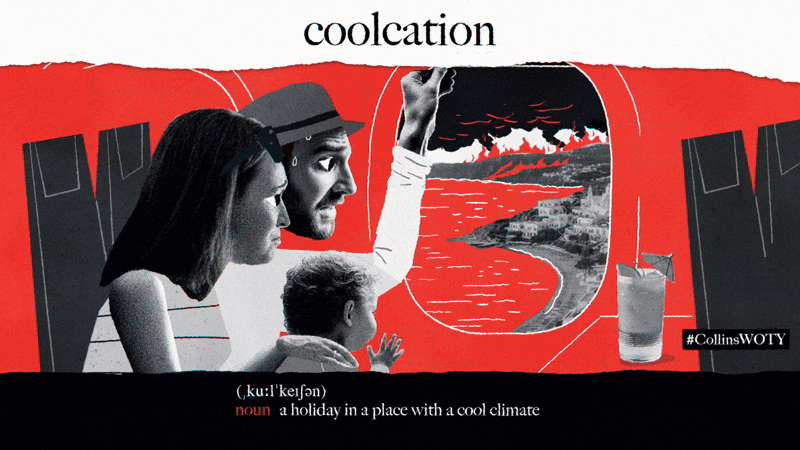Copyright © Françoise Herrmann
Terms shortlisted for the Collins Word of the Year (WOTY) are no less interesting mirrors of a year’s worth of trends and events. Collins posted the following nine 2025 Words of the Year, competing with “vibe coding”, the one term that was selected as the 2025 Word of the Year. A list of nine terms, each including a copyrighted Harper Collins definition, as well as a supporting still image, and/or GIF animation.
- aura farming: The deliberate cultivation of a distinctive and charismatic persona.
- biohacking: The activity of altering the natural processes of one's body in an attempt to improve one's health and longevity.
- broligarchy: A small clique of very wealthy men who exert political influence.
 |
| © Harper Collins Publishers |
- clanker: A derogatory term for a computer, robot, or source of artificial intelligence.
- coolcation: A holiday in a place of cool climate.
- glaze: To praise or flatter (someone) excessively or undeservedly.
 |
| © Harper Collins Publishers |
- HENRY (acronym for High Earner, Not Rich Yet): A person who has not accrued substantial wealth from their high income due to their lifestyle or external financial demands.
 |
| © Harper Collins Publishers |
- micro-retirement: A break taken between periods of employment in order to pursue personal interests.
- task-masking: The act of giving a false impression that one is being productive in the workplace.
 |
| © Harper Collins Publishers |
Quinn, R. (Nov. 6, 2025). Collins’ Word of the Year 2025: AI meets authenticity as society shifts. Collins Love of Language Blog.
https://blog.collinsdictionary.com/language-lovers/collins-word-of-the-year-2025-ai-meets-authenticity-as-society-shifts/#google_vignette
Collins Word of the Year (WOTY)
https://www.collinsdictionary.com/us/woty
















